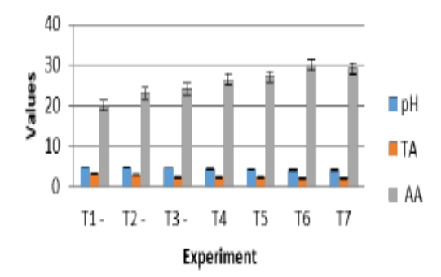


Indian Journal of Science and Technology
Year: 2024, Volume: 17, Issue: 2, Pages: 142-148
Original Article
Srinivasan Nithya1, O S Sethuraman2*, K Sasikumar2
1Research scholar, Department of Zoology, Kandaswami Kandar’s college, Namakkal, Tamil Nadu, India
2Assistant Professor, Department of Zoology, Kandaswami Kandar’s college, Namakkal, Tamil Nadu, India
*Corresponding Author
Email: [email protected]
Received Date:20 July 2023, Accepted Date:26 September 2023, Published Date:12 January 2024
Objectives: This study's objective was to assess the growth and yield of tomato plants (Solanum lycopersicum) grown in vermicompost comprised of various mixtures of paper mill sludge and sugar mill press mud along cow dung. Methods: Vermicomposting experiments with paper mill sludge and sugar mill press mud along cow dung in plastic containers at room temperature and humidity using the earthworm species Perionyx excavatus. T1 is soil alone (control), T2 is soil with inorganic fertilizer, T3 is soil and compost, T4 is soil with compost and inorganic fertilizer, T5 is soil with vermicompost A, T6 is soil with vermicompost B, and T7 is soil with vermicompost C. Findings: The vermicompost (T6) demonstrated the greatest improvement in growth parameters and productivity of tomato plants (T6), i.e. plant height (76.15cm), Fruit diameter (4.14cm), Fruit weight (91.35 g), Number of fruits per plant (90.38), and yield (8.25kg). Then fruit compounds lycopene (0.589 mg/100 ml), beta-carotene (0.297 mg/100 ml), and total chlorophyll (0.556 mg/100 ml) quantity was increased. In this tomato plant experiment, vermicompost outperformed when compared commercial chemical fertilizer, compost, and the control. Novelty: This investigation emphasizes on the industrial waste such as sugar mill press mud and paper mill sludge. This undecomposed industrial organic waste converted into value added product through the modified innovating vermicomposting process improve the nutritional value and increase the growth of the tomato plant also high stock density of Perionyx excavatus.
Keywords: Paper mill sludge and sugar mill press mud, Solanum lycopersicum, lycopene, β-carotene, Perionyx excavatus
© 2024 Nithya et al. This is an open-access article distributed under the terms of the Creative Commons Attribution License, which permits unrestricted use, distribution, and reproduction in any medium, provided the original author and source are credited. Published By Indian Society for Education and Environment (iSee)
Subscribe now for latest articles and news.